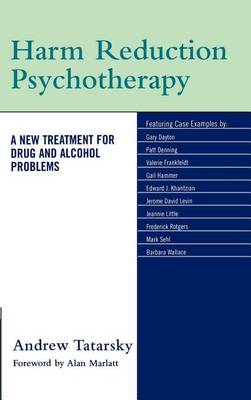This ground-breaking volume provides readers with both an overview of harm reduction therapy and a series of ten case studies, treated by different therapists, that vividly illustrate this treatment approach with a wide variety of clients. Harm reduction is a framework for helping drug and alcohol users who cannot or will not stop completely_the majority of users_reduce the harmful consequences of use. Harm reduction accepts that abstinence may be the best outcome for many but relaxes the emphasis on abstinence as the only acceptable goal and criterion of success. Instead, smaller incremental changes in the direction of reduced harmfulness of drug use are accepted. This book will show how these simple changes in emphasis and expectation have dramatic implications for improving the effectiveness of psychotherapy in many ways. From the Foreword by Alan Marlatt, Ph.D.: OThis ground-breaking volume provides readers with both an overview of harm reduction therapy and a series of ten case studies, treated by different therapists, that vividly illustrate this treatment approach with a wide variety of clients. In his introduction, Andrew Tatarsky describes harm reduction as a new paradigm for treating drug and alcohol problems. Some would say that harm reduction embraces a paradigm shift in addiction treatment, as it has moved the field beyond the traditional abstinence-only focus typically associated with the disease model and the ideology of the twelve-step approach. Others may conclude that the move toward harm reduction represents an integration of what Dr. Tatarsky describes as the Obasic principles of good clinical practiceO into the treatment of addictive behaviors. OChanging addiction behavior is often a complex and complicated process for both client and therapist. What seems to work best is the development of a strong therapeutic alliance, the right fit between the client and treatment provider. The role of the harm reduction therapist is closer to that of a guide, someone who can provide support and guidance throughout the difficult journey. The therapist-guide offers validation and respect for each client, along with willingness to meet the person where he or she is on the journey and to help them achieve the next step toward their goal.O
- ISBN10 1461628709
- ISBN13 9781461628705
- Publish Date 10 June 2007 (first published 30 June 2002)
- Publish Status Active
- Publish Country US
- Imprint Jason Aronson, Inc.
- Format eBook
- Pages 392
- Language English
